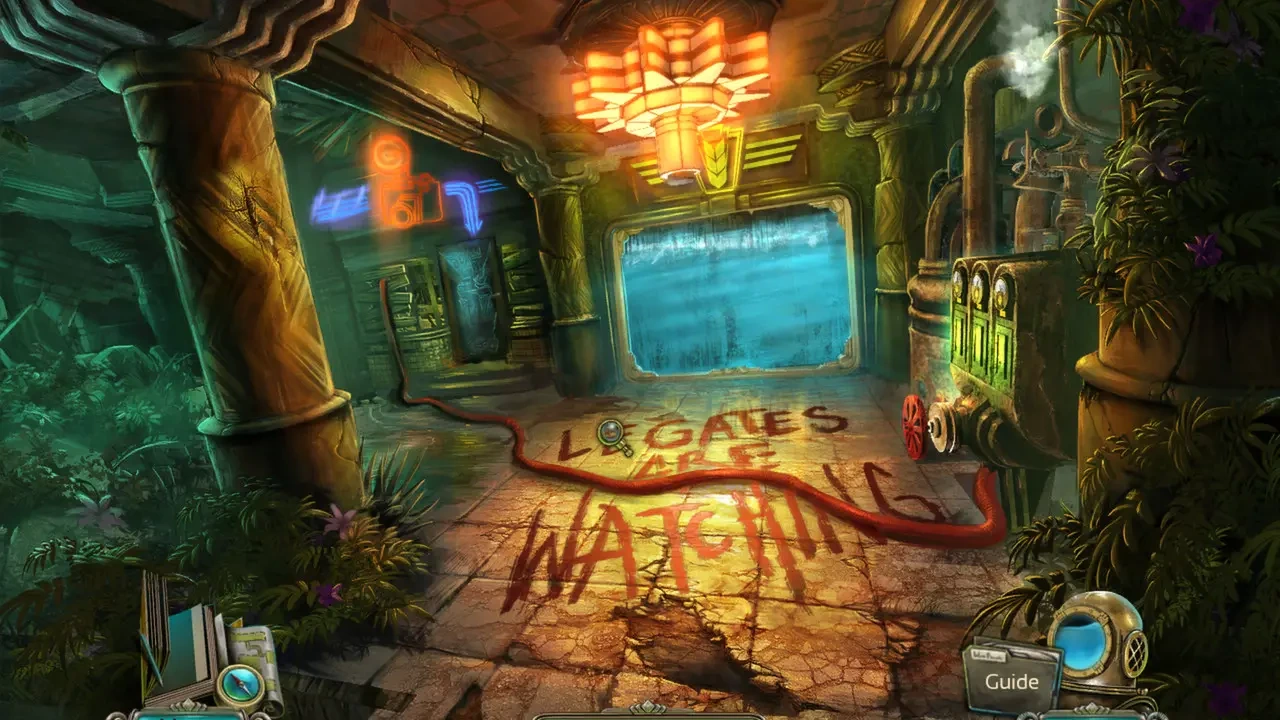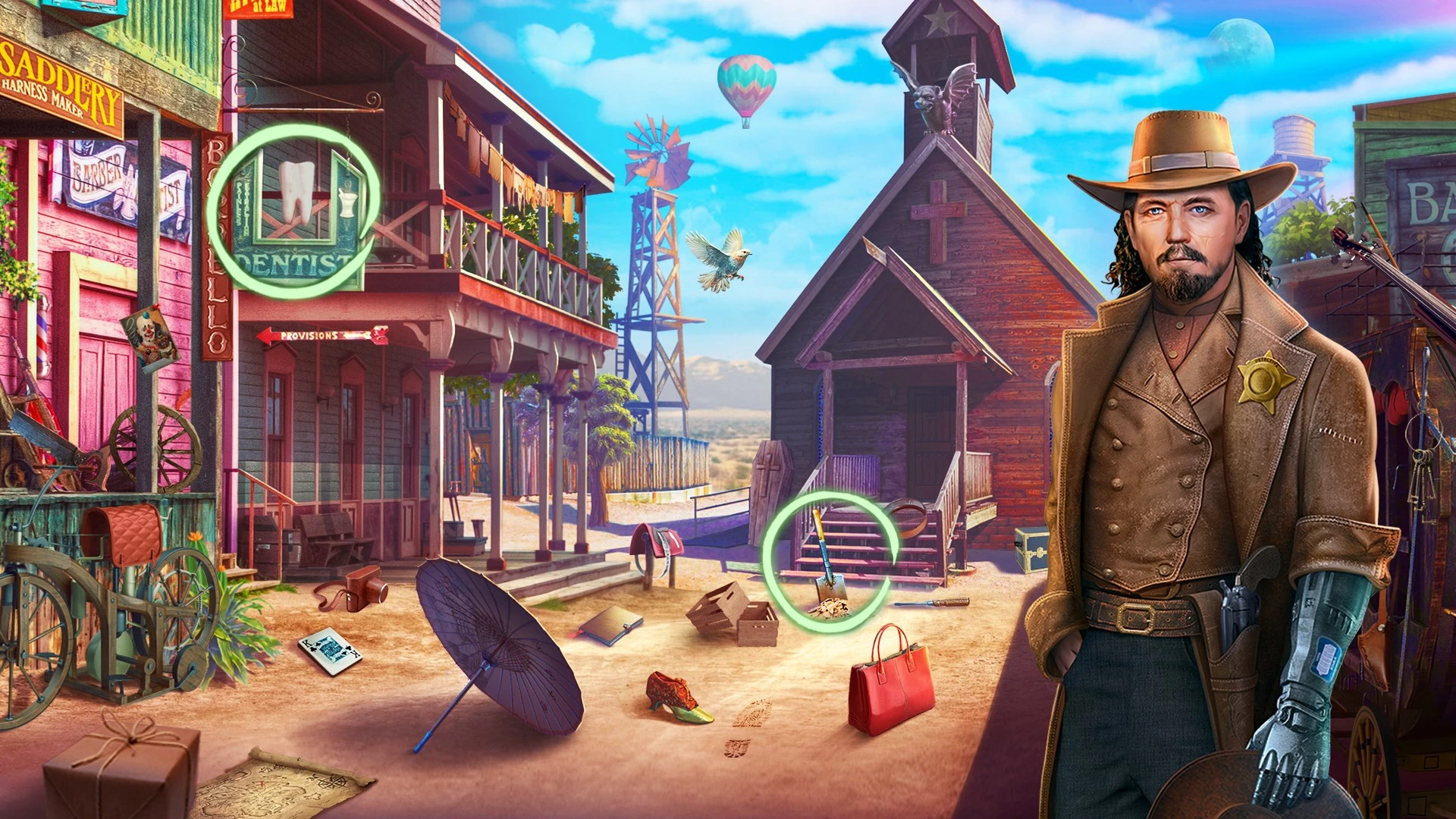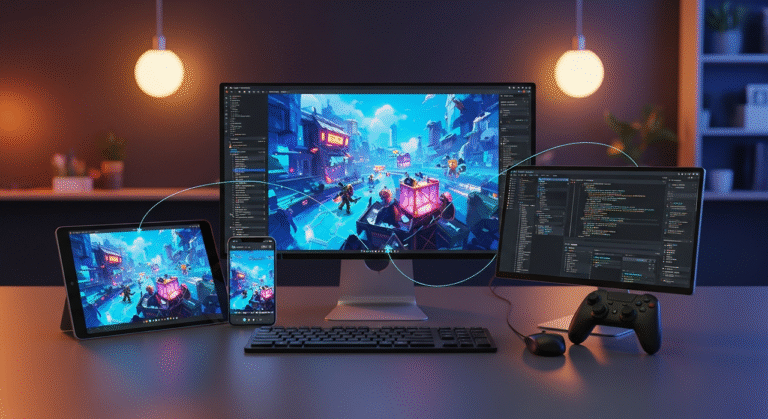Hidden Object Games (HOGs) are a thriving genre among every casual gamer, developer, and game art studio, combining puzzle-solving with narrative-driven experiences to captivate both players and developers.
For players, the appeal lies in finding hidden objects in beautifully designed scenes. At the same time, for developers, it’s the challenge of crafting an engaging, immersive experience that successfully merges storytelling, art, and gameplay.
But what is it that really makes these games tick? Let’s explore the hidden formula behind successful hidden object games, from their origins to future trends.


Need Game Art Services?
Visit our Game Art Service page to see how we can help bring your ideas to life!
Where Did Hidden Object Games Begin?
Hidden object games have their roots in early video gaming, taking influence from traditional puzzles and interactive storytelling. The genre’s popularity peaked in the mid-2000s with the rise of casual gaming platforms like PC, Mac, and mobile, and the release of games like “Mystery Case Files: Huntsville” in 2005.
Initially, HOGs were simple point-and-click adventures where players searched for items in static images. However, game design evolved to include dynamic narratives, intricate puzzles, and immersive environments, shaping HOGs into the multi-layered experiences they are today.
The rise of mobile platforms has significantly increased the genre’s accessibility to a broader audience through touch controls and shorter, “bite-sized” levels. This, in turn, has influenced a focus on intuitive interfaces and psychological game design techniques.
What Makes a Hidden Object Game Successful?
A successful hidden object game is a blend of strong narrative, challenging puzzles, and engaging art direction, creating a balanced experience for both casual players and seasoned enthusiasts.
Crafting Immersive Narratives
Compelling storytelling in game art is the backbone of modern hidden object games. Narrative-driven gameplay is crucial, since it engages players from the start and draws them into a rich, intriguing world.
The best HOGs, such as June’s Journey and The Secret Society, feature stories that evolve over time, allowing players to uncover new mysteries. This emphasis is about more than just solving puzzles; it’s about building an emotional connection to the characters and the game world.
Designing Engaging Puzzles and Mini-Games
Puzzles are a core component, and developers must design them to be challenging yet not frustrating, offering a sense of accomplishment.
Successful HOGs integrate a variety of mini-games, like solving riddles, matching objects, or light strategy, which offer breaks from the core gameplay and enhance the narrative through context or rewards tied to the story.
It’s vital to balance challenge and accessibility. This is often achieved through adjustable difficulty settings or hints that aid players without detracting from the accomplishment. Finding the right balance prevents the game from becoming monotonous or frustrating, keeping players invested.
Balancing Challenge and Accessibility
While challenging puzzles are a hallmark, accessibility is equally important. Developers must balance the difficulty level to keep the game engaging for both beginners and experienced players.
This balance is often achieved through adjustable difficulty settings or hints that assist players without diminishing the feeling of accomplishment. A game that is too easy risks becoming monotonous, while one that is too difficult may frustrate and deter players.
How Do Hidden Object Game Mechanics Evolve Beyond Clicking?
Today’s players expect more interactive and immersive experiences than the simple point-and-click mechanics HOGs started with. But how have these games kept up?
Interactive Elements That Enhance Player Immersion
Interactive mechanics, such as object manipulation, dynamic environments, or fully animated scenes, make HOGs feel more alive.
Games like The Room and The Forgotten City have advanced the genre by introducing tactile, interactive puzzles within immersive environments. Allowing players to interact with the environment, rather than just passively clicking static objects, creates a deeper and more dynamic experience.
For instance, clicking a painting to reveal a hidden safe adds a sense of discovery that static scenes can’t match. This interactivity shows art’s impact on game mechanics and pushes hidden object games into dynamic adventures, blurring the line with point-and-click classics.
Fractured Objects, Shadow Hunts, and Advanced Mechanics
Beyond traditional searching, HOGs incorporate advanced mechanics to keep gameplay fresh.
- Fractured object puzzles require the player to find pieces of a single object scattered across the scene.
- Shadow hunts involve matching objects with their corresponding shadows.
Integrating RPG and Adventure Systems
Some HOGs blend RPG (role-playing game) elements into their mechanics, allowing players to build characters, level up, and unlock abilities as they progress.
Games like The Secret Society and Grim Legends have successfully integrated adventure-style quests, combat, and item collection into the core hidden object gameplay loop. This hybrid approach appeals to players who enjoy both the puzzle-solving and the deeper engagement of role-playing.
What Are the Challenges in Hidden Object Game Development?
Despite the simplistic exterior UI/UX design of these games, developing a HOG requires a tricky balance of art, story, mechanics, and technical design while ensuring the game is polished and accessible across different platforms.

Art and Scene Composition
One of the biggest challenges is creating scenes that are visually cluttered yet still easy to navigate. HOGs depend on visually rich environments filled with potential hidden items.
Developers must carefully balance the level of detail to avoid overwhelming the player while keeping the scene visually interesting. Creating this “organized chaos” demands a strong understanding of art direction, composition, and player behavior.
Technical Hurdles
With the rise of mobile and cross-platform play, HOGs must be optimized for various screen sizes and resolutions.
Localization is crucial, requiring developers to ensure the game’s language, visual design, and cultural references are appropriate for different regions.
Screen scaling, responsiveness, and touch control compatibility are vital for a seamless experience across devices like smartphones, tablets, and desktop computers.
Performance Optimization for Multiple Platforms
Hidden object games target casual gamers, many of whom use older devices, making performance optimization and transmedia storytelling critical. So, another technical challenge is ensuring HOGs run smoothly on different devices and operating systems.
Game art performance optimization ensures that the game’s graphics, animations, and interactions work seamlessly on both low-end and high-end devices.
With mobile gaming on the rise, ensuring smooth performance on both Android and iOS across various screen sizes is essential for retaining players.
How Do Hidden Object Games Earn Revenue?
Most hidden object games adopt a free-to-play model supported by in-app purchases or ads. These strategies ensure the game remains accessible while providing developers with opportunities to generate revenue.
For example, a prompt like “Out of hints? Buy more for $0.99!” capitalizes on players’ desire to progress.
These games boast high conversion rates, particularly among their core demographic of women aged 35 and older, who are loyal and willing to spend. Developers also use time-limited events and subscription models, like June’s Journey’s regular content updates, to maintain engagement and revenue.
How Is Art and Scene Design Used to Tell the Story?
Have you ever looked at a HOG and said, “Yeah, this is worse than my post-7-days-of-gaming-bedroom”? That’s where art and scene design come onto stage!
Art and scene design are essential components that drastically influence a player’s experience, providing context, enhancing the narrative, and immersing players in the world.
Choosing Themes and Environmental Storytelling
Every HOG starts with a theme. The visual elements and environment work together to tell the story. Environmental storytelling involves telling part of the narrative through the setting itself, like lighting, a dusty book, or a crumbling castle, using symbols to create rich, interconnected, and immersive worlds.
Color, Object Placement, and Visual Hierarchy
Effective scene composition requires a careful balance of color, object placement, and visual hierarchy.
Color theory can help you evoke emotions, and the strategic placement of objects guides the player’s attention to the most critical areas. Objects must be integrated naturally into the scene rather than just hidden.
A visually well-balanced scene makes the search both enjoyable and rewarding. This meticulous game art design keeps scenes engaging and playable across devices.
Bringing Scenes to Life with Animation and Interactivity
Adding animation and animatic elements (such as flickering lights or swaying trees) makes the environment feel more alive. Interactivity is also crucial, allowing players to directly interact with objects to reveal secrets or receive feedback, thereby enhancing the immersive experience.
How Have Hidden Object Games Evolved Over Time?
HOGs have evolved from simple point-and-click scavenger hunts into complex, narrative-driven experiences that combine puzzle-solving with immersive worlds.

From Classic Scavenger Hunts to Narrative Journeys
As technology advanced, the scope of HOGs grew. Basic item-finding games transformed into multi-layered adventures and game narrative designs, where players uncover intricate stories, explore vast environments, and interact with compelling characters.
The genre now includes RPG elements, hidden storylines, and puzzles that drive the narrative forward, offering much more than just a search for objects.
Mobile’s Role in Shaping Design and Accessibility
The rise of mobile platforms has fundamentally changed the HOG genre. Mobile gaming has introduced the genre to a broader audience, prompting developers to create games that are more accessible, with touch controls and shorter, bite-sized levels.
This shift has influenced user interface design, emphasizing intuitive interfaces and quick, satisfying gameplay loops to appeal to casual players.
Crossing Genres: HO Adventures and RPG Hybrids
The blending of HOGs with adventure and RPG elements is a significant evolution. Games like The Secret Society and Hidden City integrate adventure-style gameplay where players collect items, solve puzzles, and unlock new areas as part of an overarching quest.
These hybrid genres have expanded the appeal of HOGs by adding greater depth and narrative progression.
What’s Next for Hidden Object Games?
As the genre continues to evolve, we can anticipate more innovation in mechanics, art, and narrative. The future will involve immersive storytelling, the integration of virtual and augmented reality, and even deeper cross-genre experiences blending RPGs, strategy, and puzzle elements.
For example, AR and VR in animation are the pioneers in various kinds of transformative game art development!
- Virtual reality (VR) could transform scenes into immersive 3D environments, allowing players to explore spaces firsthand.
- Augmented reality (AR) might bring hidden object hunts into the real world, blending digital and physical challenges.
CASE STUDY: Why June’s Journey Worked!
Now, to wrap it up, let’s examine how all the different elements we talked about can come together to make a great, wholesome game: “June’s Journey“. This HO is a highly successful casual game that blends an engaging narrative with beautiful artwork and innovative mechanics.
The game follows June as she uncovers family secrets in an exotic setting. Its success is attributed to its compelling story, frequent updates, and engaging social features. By introducing timed events, interactive mini-games, and a rich world, June’s Journey has set a high bar for HOG design.
Final Words
Hidden Object Games continue to thrive because of their ability to evolve with technology and changing player preferences.
Whether you’re a player seeking a relaxing puzzle or a developer aiming to create the next big hit, understanding the hidden formula of successful HOGs is key to mastering the genre. The genre’s hidden treasures are indeed set to become even more immersive, complex, and rewarding.









